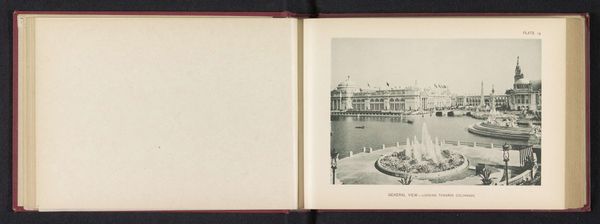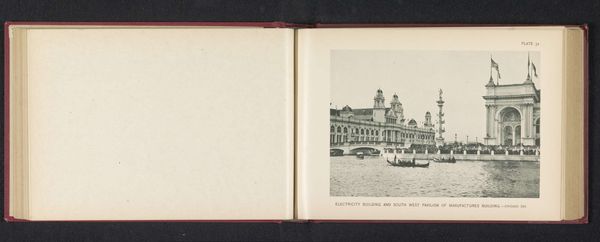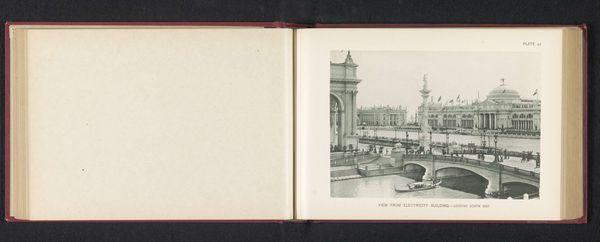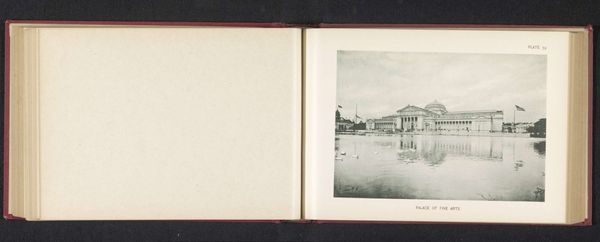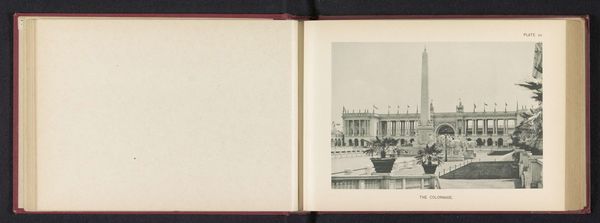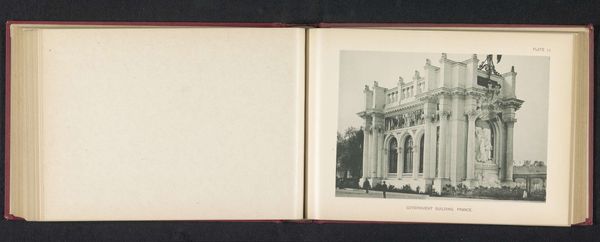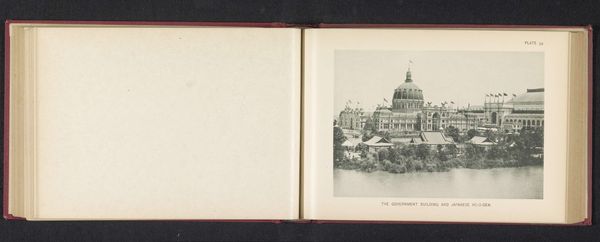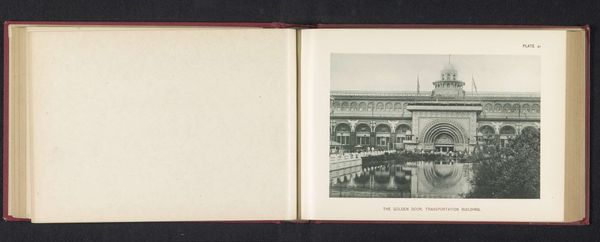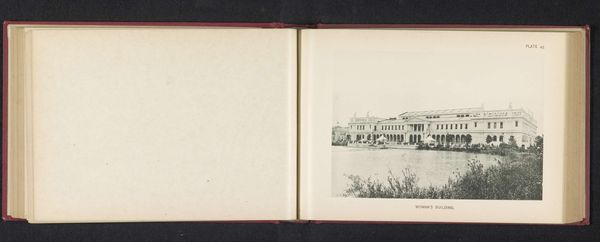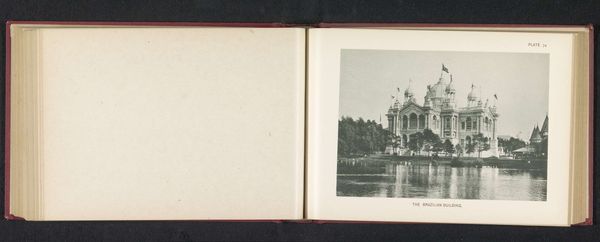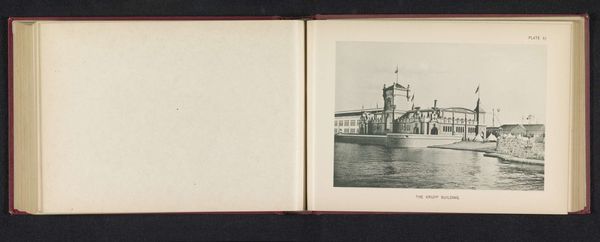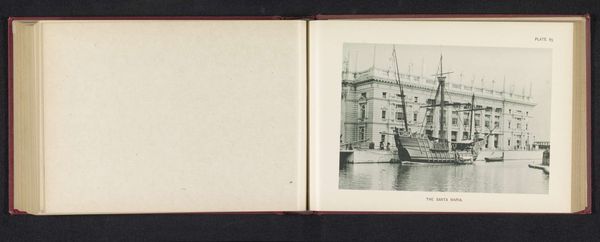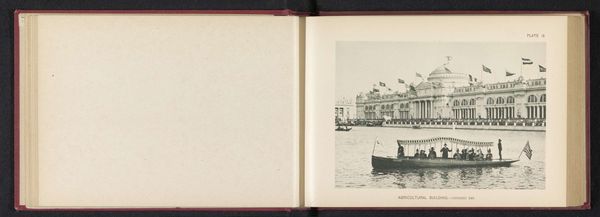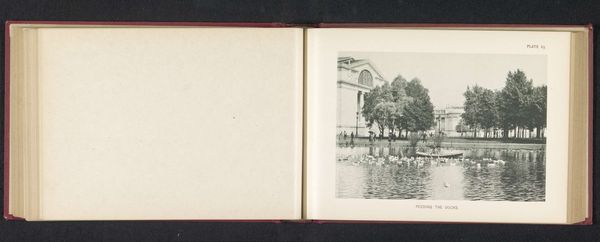
Gezicht op het elektriciteitsgebouw op de World's Columbian Exposition in Chicago in 1893 1893
0:00
0:00
print, photography, photomontage, architecture
#
aged paper
#
script typography
#
neoclassicism
# print
#
hand drawn type
#
personal journal design
#
photography
#
personal sketchbook
#
hand-drawn typeface
#
fading type
#
photomontage
#
cityscape
#
delicate typography
#
academic-art
#
design on paper
#
architecture
#
historical font
Dimensions: height 133 mm, width 191 mm
Copyright: Rijks Museum: Open Domain
Curator: The work before us, captured in 1893, is a photograph by Charles Dudley Arnold. It shows the Electricity Building at the World’s Columbian Exposition in Chicago. Editor: Oh, wow. It’s like stepping back in time. I mean, look at that building! It seems almost…ethereal, doesn't it? Like a dream made of marble and light. There is so much light in this building in contrast to the solemn look of the album it is featured on. Curator: That sense of the unreal is quite deliberate. The World's Fair was intended to project an image of American progress and modernity, showcasing advancements in science and technology— electricity being at the forefront. This building, therefore, was not just a structure, but a symbol of hope and potential. Editor: It worked! Looking at this now, I feel a little bit of that turn-of-the-century optimism. It's the promise of a brighter future distilled into architectural form. Even the way it’s captured – this photographic print gives it a soft, almost romantic quality. A delicate memento, I think, to give an idealistic perspective on architecture. Curator: Precisely. And in viewing this within the album context, it prompts us to consider how these narratives were constructed and circulated. Who was included, who was excluded, and what ideologies were being promoted through these images? Editor: You’re so right, though the stark contrast is undeniable when you juxtapose the technological progress celebrated with the context of racial segregation and social inequalities prevalent at the time, not to mention, on Native American land... The narrative gets way more complex. Still, though, seeing it makes me dream, I admit it! Curator: Ultimately, it's that very tension – between progress and its discontents, between utopian visions and the realities of power – that makes this photograph so compelling to revisit today. Editor: I agree. It’s a beautiful artifact, really, reminding us that progress is never a straight line. There's value in interrogating that line with our questions!
Comments
No comments
Be the first to comment and join the conversation on the ultimate creative platform.
